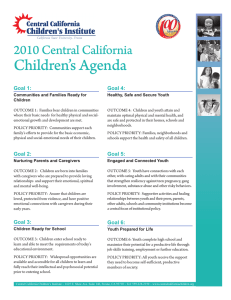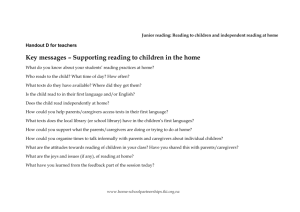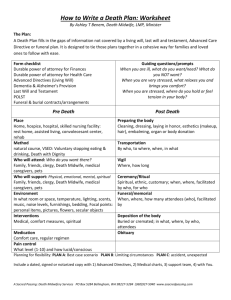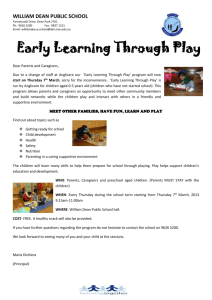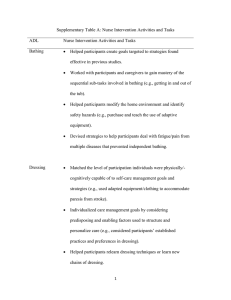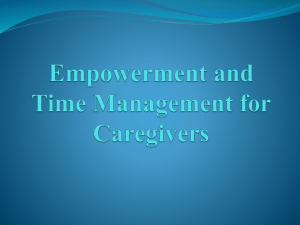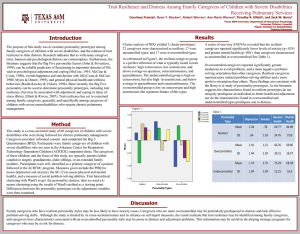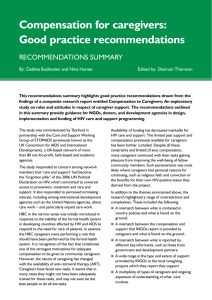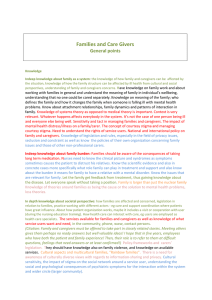space to grow - The Program for Infant/Toddler Care
advertisement
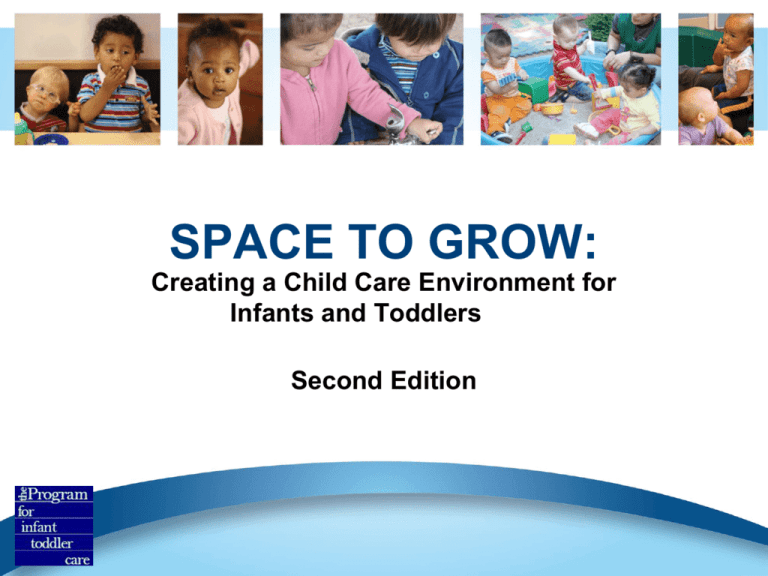
SPACE TO GROW: Creating a Child Care Environment for Infants and Toddlers Second Edition An ideal infant setting supports: • Security • Caring • Predictability OBSERVATION: The Key to Planning • Observe your resident experts Does the environment meet children’s needs? • How do the children move? • What captures their attention? • How do they explore the surfaces? • How do they explore the objects? SPACE TO GROW: Issues to consider • Safety • Child Size • Health • Flexibility • Comfort • Movement • Convenience • Choice HEALTH & SAFETY • Floors – Keep bare floors dry & not highly polished. – Vacuum daily and spot clean carpets. – Different materials require different types of care. SANITIZE • Is diaper area separate from food preparation area. Does each area have a separate sink? • Wash toys with soap & water, rinse with bleach solution & air-dry. SAFETY MEASURES: • Do diaper changing tables have a 3 inch barrier? • Are hazardous cleaning supplies locked and out of reach? • Are all electrical outlets covered? What to Look for : • Sharp edges • Dangerous things for a child to put in their mouth • Sand box that is left un covered at night • Standing water in buckets or open containers Benefits of a Safe Environment • Caregivers can give care, not be policemen. • Caregivers don’t need to say, “No.” as often. • Caregivers and children smile more! COMFORT • Comfortable environments help children feel at home • Comfortable environments help children feel secure enough to explore and learn. Louis Torelli Open the windows for fresh air: • Keep everyone’s energy up. • Keep room free from unpleasant odors. Comfort • Avoid use of air fresheners • Change AC filters regularly • Avoid bare light bulbs • Use natural light when possible CONVENIENCE – Saves caregivers’ time – Saves caregivers’ energy – Helps caregivers focus on the children Organize Space • An open middle area allows you to observe the whole room at once. • An open middle area enables the children to see you. Mini-Environments: Create protected areas for play by using: • Low Partitions • Furniture • Risers Storage Space • Create small storage spaces near activity areas. • Store extra toys and equipment up high. • Store supplies near diapering, feeding and napping areas. Convenience frees you to focus on the needs and interests of the children. Why is child size important? • Children need to have control of their environment. • Child size helps the child learn selfhelp skills. • Child size helps the child develop motor skills. Louis Torelli CHILD SIZE • Display pictures at the children’s eye level. • Locate mirrors at floor level. • Use child size shelves. • Use child size equipment. • Use child size furniture. Child Size • Climbing structures should be 2 feet or less for children under 18 months. • Slides and climbing structures are okay at 3 feet for children 18-36 months of age. Different Level Surfaces: • Children practice their motor skills. • Children see things from different perspectives. • Children learn to climb safely. • Caregivers can see children eye to eye. FLEXIBILITY • Change as children grow & develop. • Change as children’s interests fluctuate. • Meet a range of developmental levels. • Meet a range of abilities, including children with special needs. Flexible Equipment • Tunnels • Slides • Risers MOVEMENT • Children are able to move around freely. • Children are able to move around safely. • Children are driven to move. • Children do not necessarily need equipment to help them move. Meal Time • Very young babies should be held for feeding. • Young toddlers develop social skills by sitting together at a low table, feet on the floor. If a child cannot move: • Bring the environment to the child. • Pick up the child and move through the environment. CHOICE • Provide choices. • Choices help children learn about who they are and what they like. • Spatial structure that offers choices in different areas of the room allows children to follow their own interests. Make the choices stand out: • Put just a few toys on a shelf. • Use natural wood or light toned paint. • Create soft, cozy area for resting & reading. • Create areas where children can be alone safely. In Summary: Environments Should Promote & Maximize: • Health • Child size • Safety • Flexibility • Comfort • Movement • Convenience • Choice
